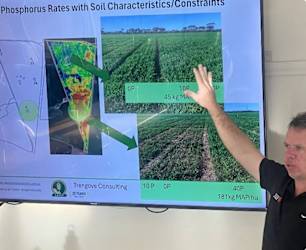A NEW technical and troubleshooting resource for mixing and batching agricultural chemicals is now available for grain growers.
The Grains Research and Development Corporation (GRDC) guidebook is a key outcome of a four-year GRDC extension investment into spray efficiency and efficacy, which also included hands-on sprayer calibration and application workshops for growers.
Seventeen full-day workshops have been delivered so far, with the remaining three to be run this year.
Mixing and Batching for Agricultural Chemical Application – A Technical Guide With Case Studies of Australian Grain Growers And Spray Contractors showcases day-to-day practicalities, with grower case studies for various enterprise sizes, bringing different concepts, ideas and creative engineering to spray operations.
The case studies included in the guidebook cover a range of operation sizes (both grower and contractor) and crop mixes in different rainfall zones. They explore the individual requirements – such as farm infrastructure, equipment and staff management – needed to service their spray operations.
WA-based spray specialist Bill Campbell said the guidebook contains information on chemical formulations and the correct mixing order, with a summary covering combining common agricultural chemical formulations together and a brief overview of common mishaps that can occur, and tips on how to avoid them.
“Fastest is definitely not always the best when it comes to mixing chemicals,” Mr Campbell said.
“Always follow label recommendations and check product compatibility and manufacturers’ mixing guidelines.
“Use good-quality water and consider using an adjuvant to improve the physical compatibility of certain tank mixes.
“When mixing a batch for the first time, conduct a jar test that replicates the tank mix. This will reduce the risk of financial losses and time-consuming and environmentally unfavourable situations, in cases where the mix doesn’t turn out as intended.”
GRDC grower relations manager Jo Wheeler said the spray workshops were an example of how the GRDC’s National Grower Network (NGN) operates.
“The National Grower Network has been established to support meaningful engagement with grain growers, improve understanding of local issues and assist in the development of investments that are locally relevant and have on-farm impact,” Ms Wheeler said.
“Growers love to look over the fence to see what their neighbours are doing to improve their production practices. The guidebook takes this one step further by including grower experiences on mixing and batching from a wider geographic area.”
Aspects to consider to identify efficiency gains for mixing and batching agricultural chemicals include:
- water availability – travelling to and from a water source wastes time
- labour availability
- farm size and layout – the amount of travel time, shifting spray equipment and chemicals
- spray units – suitability of mixing and batching equipment, size and number of units to suit farm conditions, mobility of the units
- ease of decontamination
- OHS – eye wash/shower/other safety issues should be readily accessible.
The guidebook is available on the GRDC website.







